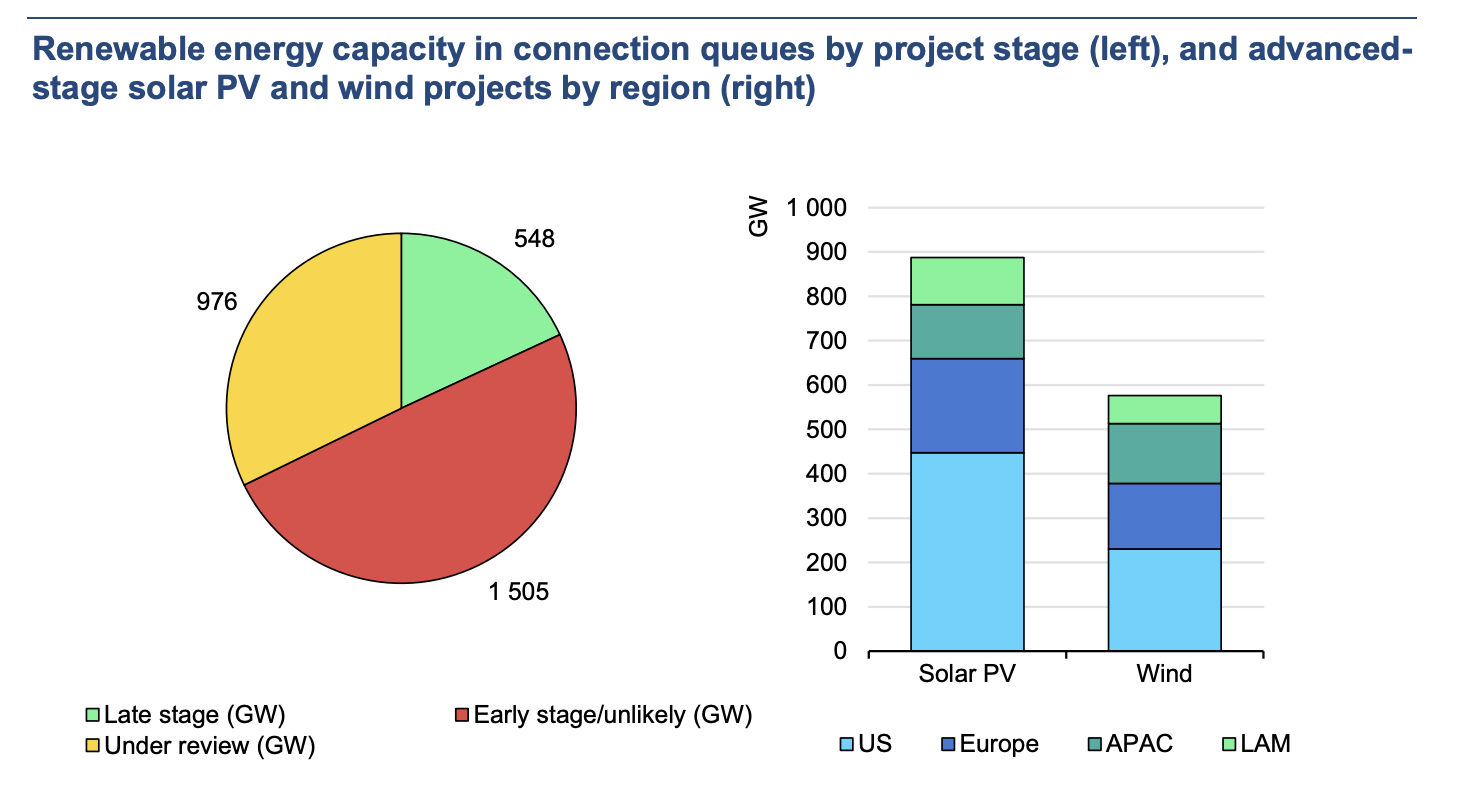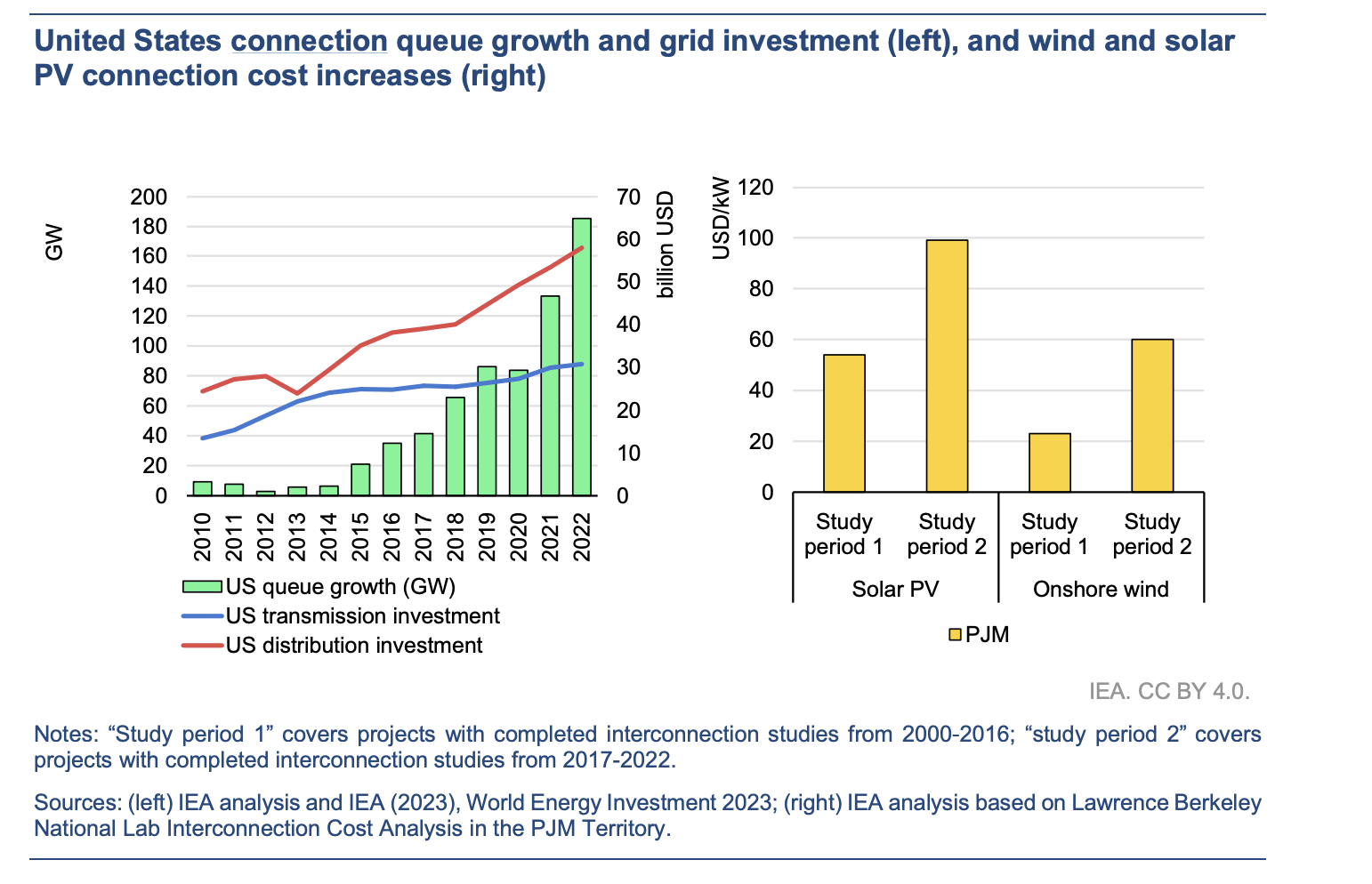
Get the latest climate technology news directly to your inbox.

Photo credit: Department of Energy

Photo credit: Department of Energy
Lowering barriers to entry for renewable energy developers has a downside: today there are over 3,000 gigawatts of projects sitting in interconnection queues globally, the International Energy Agency found.
- The top line: Interconnection wait times, costs, and project backlogs are all on the rise around the world. The growing mismatch between the rapid speed of renewable energy development and the decidedly not rapid speed of grid expansion could slow wind and solar development growth, IEA said in a report released this week.
- The nuts and bolts: Around 1,500 GW of wind and solar PV projects in the pipeline are in the late stages of development — around double current global capacity. Around half of the almost-ready solar projects in the global queue are in the United States. Long wait times also impact the ability of other technologies that rely on renewables, like green hydrogen, to expand capacity.
- The impact: Investors are increasingly limiting investments to “low-risk projects,” including those that have already secured an interconnection agreement. In some ways this is part of a vicious circle, in which “speculative connection requests” for projects that are far from ready to come online are clogging up the first-come-first-served queue.
Since 2010, entries to U.S. interconnection queues have increased twentyfold, per the IEA. Over that same period, investment in transmission and distribution has merely doubled. Those conflicting numbers have led to an increase in average interconnection lead times from three years in 2015 to five years in 2022. And in some regions, interconnection costs doubled.

The issue is very much a global one. In the United Kingdom, queue entries have increased by 80% in the last year alone, and 120 GW of projects in the queue have connection dates in 2030 or later. Grid operators in Greece and Hungary are no longer accepting applications for large-scale systems, and developers across Europe say the long queue is a barrier — in part because the cost of connection has risen so dramatically — especially for solar.

The interconnection challenge, however, isn’t just about a lack of money spent on the grid. It’s also a policy issue, the report concluded.
Half of projects in the interconnection queue globally are still in very early stages, and unlikely to come online. And while grid investment must double by 2030, the queues themselves need to be reformed, IEA said, to address the immense lead times and project speculation.



.jpg)

.jpg)